
Every winter, South Korea bursts into a season of warmth, reflection, and family reunions.
This is Seollal, the Korean Lunar New Year, one of the country’s most important traditional holidays. For locals, it’s a time to honour ancestors, enjoy home-cooked traditional foods, and share heartfelt moments with family members.
For travellers visiting in February, Seollal offers a rare opportunity to experience Korean culture up close: from trying rice cake soup to joining traditional folk games and partaking in the traditional festivities. Both travellers and Koreans wear hanbok at the palaces, observing deep respect for the heritage.
In this guide, you’ll learn how to celebrate Seollal like a local: what the holiday means, which customs you can experience, must-try Seollal dishes, and the best hotels in Seoul for easy access to the festivities.
Key Takeaways
🎑 Seollal, the Korean Lunar New Year, is one of Korea’s most cherished traditional holidays, offering travellers a glimpse into family rituals, food, and games.
🪅 Experience Korean culture firsthand by joining ancestral rites, wearing hanbok, or trying traditional folk games like Yutnori.
🍲 Taste authentic Seollal dishes such as rice cake soup, savory pancakes, and japchae: each symbolising prosperity and unity.
📋 Plan ahead for the Seollal holiday, as many Korean locals travel home from overseas. Stay near Dongdaemun or Myeongdong for easy access to open attractions.
🏨 Enjoy a great location and welcoming atmosphere at Travelodge Myeongdong Euljiro and Travelodge Dongdaemun Hotel Seoul, ideal bases for an authentic and comfortable Seollal experience.
What Is Seollal and When Is It Celebrated?

Seollal, also known as the Korean Lunar New Year, follows the lunar calendar and usually falls between late January and mid-February.
👨🏻👩🏻👦🏻👦🏻 It’s a three-day national holiday marking the start of the new lunar year, and also a time when South Koreans reunite with family members.
🧧 During Seollal, families gather to perform ancestral rites known as charye, where they prepare symbolic dishes and exchange deep traditional bows with elders: a gesture of respect and gratitude.
Though this is a solemn and sacred observation for mainly South Koreans, visitors can still experience the country’s Seollal spirit:
🎎 Palaces and hanok villages host cultural events for both locals and travellers
👘 People stroll through the streets dressed in traditional clothing
🪅 Traditional games are played in open squares.
How to Celebrate Seollal Like a Local
Many cities offer cultural programs that allow you to participate in local traditions, sample traditional foods, and play traditional folk games alongside locals.
Participate in Charye (Ancestral Rite)
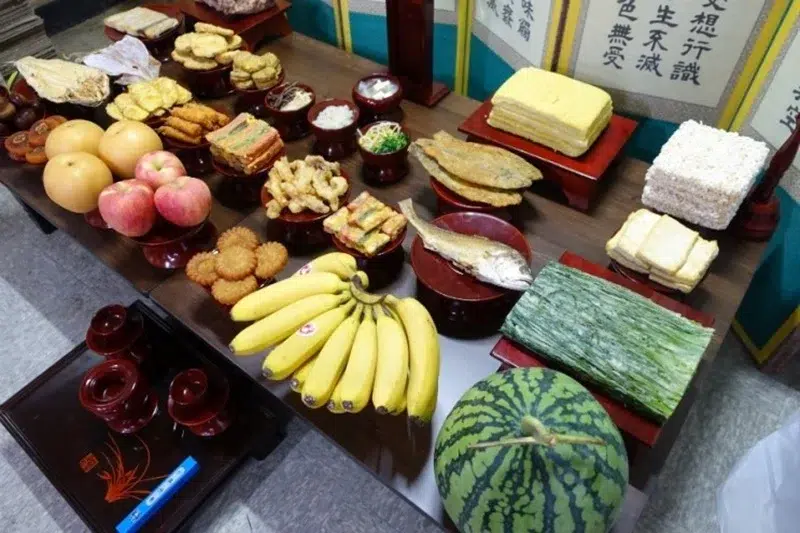
Charye is the heart of Seollal: a ceremony that honours ancestors through food offerings and family prayers.
It reflects the deep respect that Korean people hold for their lineage. While this is usually a private family ritual, you can witness it at places like the National Folk Museum of Korea Lub Wioska Hanok Namsangol.
Wear Hanbok and Visit Palaces

Koreans wear hanbok during Seollal as a symbol of respect and observation. Visitors can rent these colourful garments near Gyeongbokgung Palace or Bukchon Hanok Village.
In fact, those visiting the following palaces and shrines get free admission when they wear a hanbok:
🏯 Gyeongbokgung Palace
🏯 Changdeokgung Palace
🏯 Changgyeonggung Palace
🏯 Deoksugung Palace
⛩️ Jongmyo Shrine
Play Yutnori (Traditional Board Game)
Yutnori is one of the most traditionally played folk games during Seollal. It uses wooden sticks instead of dice, and teams compete to move their markers around a board. It’s a game of luck, laughter, and friendly competition.
You can play traditional folk games like Yutnori or Tuho (arrow throwing) at open-air events in Namsangol Hanok Village. These games are a lively way to experience Korean culture firsthand.
Watch the First Sunrise of the Year
Many South Koreans start the new year by watching the first sunrise: a symbolic moment of hope and good fortune.
It’s called “Haemaji” (해맞이), which literally means “greeting the sun.” During Seollal, many Koreans wake up early or travel to coastal spots and mountains to watch the year’s first sunrise. This act is believed to bring good fortune, health, and happiness for the coming year.
In Seoul, Wieża Namsan (znany również jako Seoul Tower) is also a popular spot for sunrise views.
For a quieter experience, head to the Han River parks or a nearby mountain trail for panoramic views of the city.
Korean New Year Foods You Must Try
No Seollal celebration is complete without a table full of traditional food. Here are a few dishes that are integral to Seollal celebrations, and where you can find them.
Tteokguk (Rice Cake Soup)
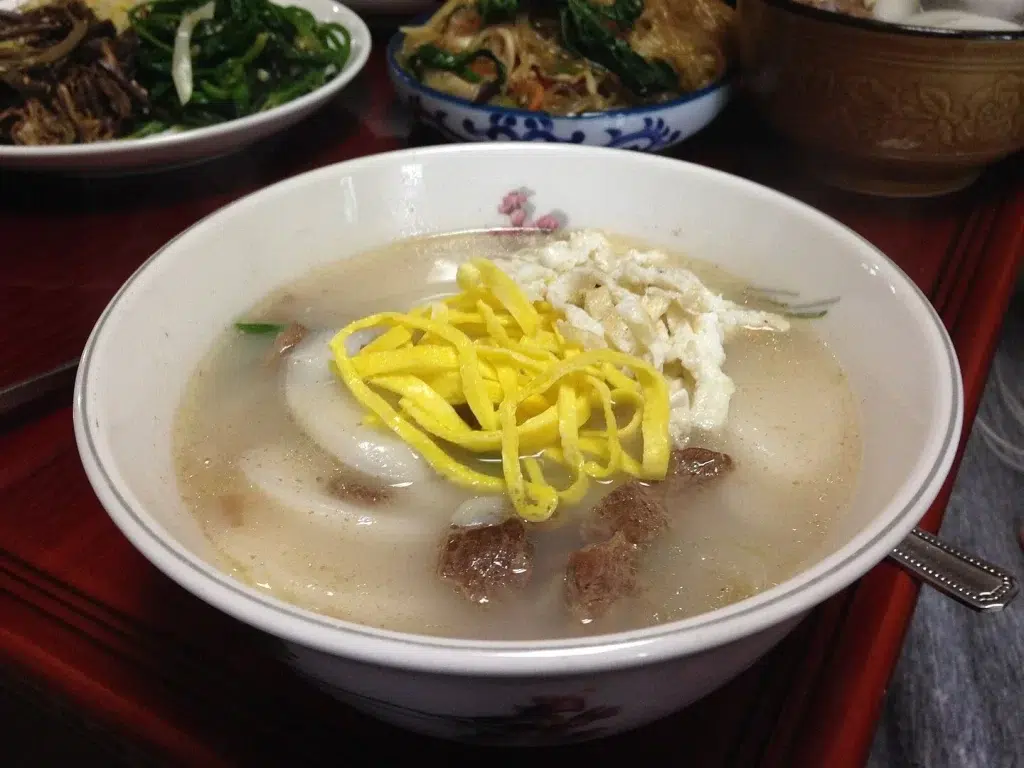
A steaming bowl of rice cake soup, Lub tteokguk, marks the start of a new year. The soup is made with sliced rice cakes, tender beef, and a light broth. Simple, yet deeply satisfying.
It holds deep symbolic meaning during Seollal. In Korean tradition, eating a bowl of tteokguk on Seollal signifies that one has grown a year older and is ready to embrace good fortune, health, and prosperity in the months ahead.
You can try this traditional soup at local restaurants around Myeongdong Subway Station or Insadong, both easily reachable from central hotels in Seoul. You’ll also find Tteokguk on every street corner.
Travellers can easily spot a tteokguk stall when they peer from the window of their Dongdaemun Hotel room.
Jeon (Savory Pancakes)
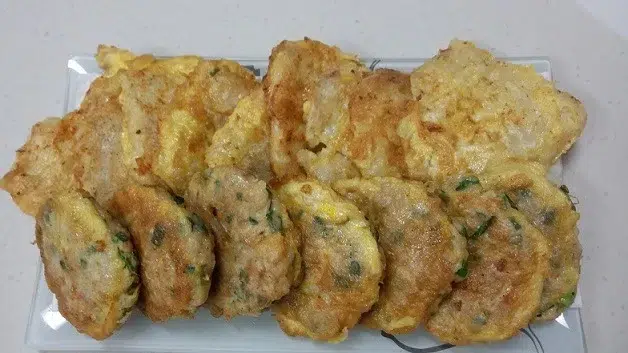
Families prepare a variety of savory pancakes known as jeon.
These delights are filled with kimchi, seafood, or a variety of vegetables. Fried to golden perfection, they represent abundance and are often shared at family gatherings.
During Seollal, families gather to prepare various types of jeon together. Offering jeon on the ancestral rites table is a way to honour ancestors and invite their blessings for the year ahead.
You’ll easily find these in stalls, food carts, and food spots around metro areas. Jeon is even served at the commercial areas of many Seoul hotels. You’ll only be an elevator away.
Japchae (Glass Noodles with Vegetables)
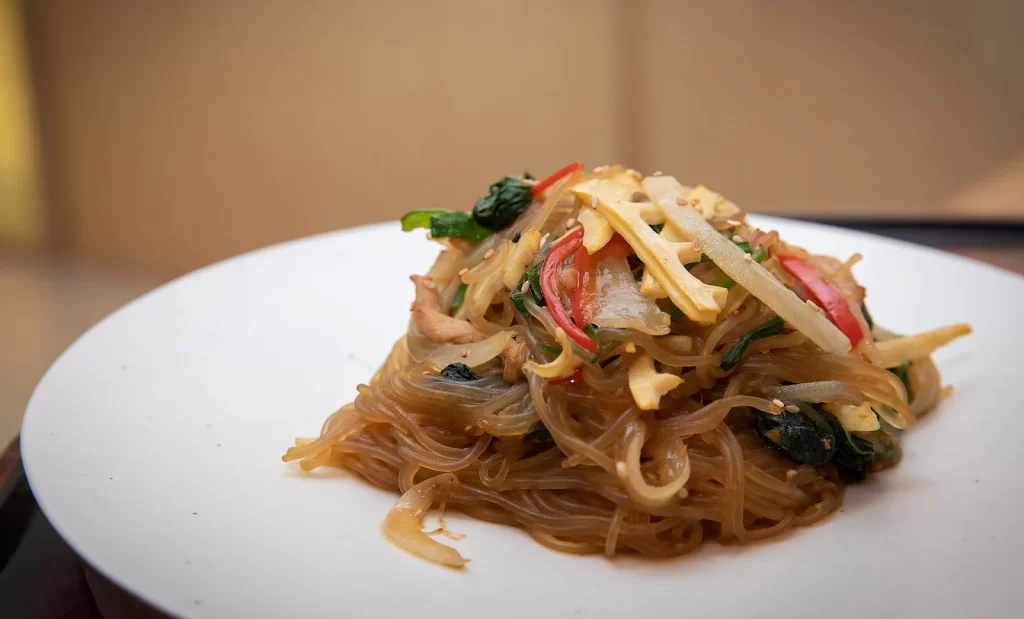
This sweet and savoury dish of glass-like noodles mixed with stir-fried vegetables and beef is another festive favourite.
Koreans traditionally prepare Japchae for special occasions, and it’s loved for its chewy texture and fragrant sesame oil aroma. Each ingredient, from the golden eggs to the green spinach and brown glass noodles, symbolises a different blessing, like wealth, health, and happiness.
Whether you’re staying at a Dongdaemun Hotel or lounging at a mall in Seoul, you’ll be sure to find Japchae within twenty paces from where you are.
Hangwa (Traditional Korean Sweets)
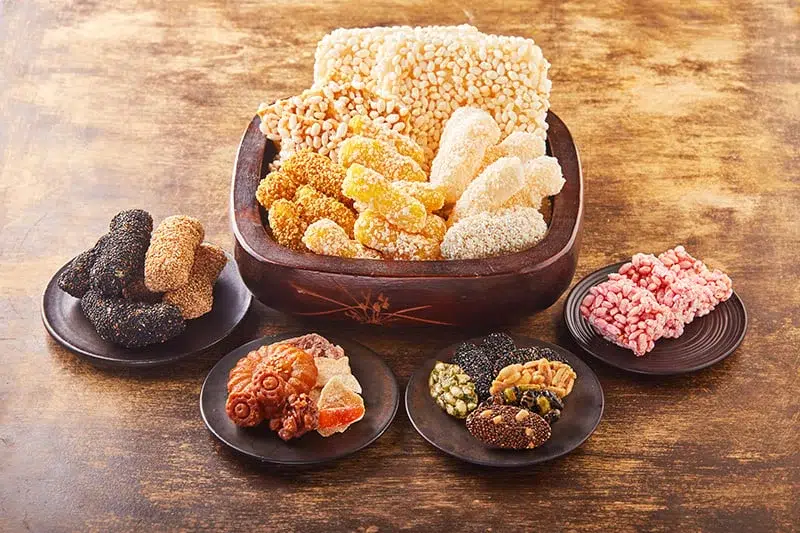
Hangwa are colourful rice-based sweets that come in beautiful shapes and patterns. You can find them at Gwangjang Market, around Insadong, and in food stalls peppered throughout South Korea’s cities.
These sweets are deeply traditional. They’re often used in ancestral rites and ceremonial offerings, especially during Seollal, Chuseok, and weddings. Their bright colours and delicate shapes have long represented joy, sincerity, and purity.
These are perfect souvenirs and pair wonderfully with tea on a chilly winter day.
Plenty of these traditional foods can be bought from local markets and food stalls. These are easily found in convenience stores located beneath many Seoul hotels.
Travel Tips for Seollal Visitors
When visiting Seoul during a solemn cultural observation like Seollal, there are a few key points tourists should remember.
These ensure a smooth, exciting, and headache-free trip.
📅 Plan ahead. During the Seollal holiday, many locals leave the city, and some restaurants or shops may close. Check schedules in advance and plan your trip around the commuter peak.
🚇 Getting around. The airport limousine bus provides direct access from Incheon International Airport to most hotels in Seoul. Also, use a T-money card for buses and the subway line. The Seoul Metropolitan Subway connects hotels to plenty of tourist attractions, shopping centers, and activities. You’d be surprised how accessible Seoul is.
💬 Language and etiquette. Learn to greet with a deep bow when meeting elders and say “Saehae bok mani badeuseyo” (Happy New Year). This goes a long way in cultural appreciation and observation.
🏨 Stay central. Hotels around Dongdaemun or Myeongdong are within walking distance of attractions, making them fantastic places to experience Seollal. Right at the heart of Seoul.
🧥 Pack for winter. Expect cold weather in February. Pack warm clothing, gloves, and comfortable shoes for sightseeing.
Where to Stay During Seollal

Finding a hotel in Seoul with a good location makes all the difference during Seollal.
Hotele Travelodge Azja offers cosy, accessible stays that make exploring easier: whether you’re attending cultural events, enjoying traditional games, or sampling Korean dumplings at a night market.
🏨 Travelodge Myeongdong Euljiro – With free WiFi, spacious rooms, and friendly hotel staff, this property is ideal for travellers who want to stay near shopping streets, temples, and local eateries. It’s also close to Myeongdong Subway Station, Lotte Department Store, and countless coffee shops and restaurants.
🏨Travelodge Myeongdong Namsan – This accommodation is directly at the heart of cultural activities, being near both Changdeokgung and Gyeongbokgung Palace. The hotel also provides cosy accommodations, perfect for unwinding after a long day.
🏨 Podróże Dongdaemun Hotel Seoul – A great location for visitors who love culture and food. The hotel offers laundry and ironing facilities, air conditioning, and is within a convenient distance of Seoul Station, City Hall Station, and the local markets.
Both hotels provide fantastic service, comfortable amenities, and a hotel location that’s perfect for exploring everything Seoul has to offer for Seollal.
Celebrate Seollal 2026 the Local Way
Celebrating Seollal in Korea isn’t just about sightseeing. It’s about embracing the culture and heritage at the heart of the Korean people.
Whether you’re learning to play traditional folk games, tasting rice cake soup, or watching the first sunrise, every experience reflects the sacred Korean culture.
For a memorable start to the Lunar New Year celebrations, plan your trip well in advance. Explore Korea’s hidden gems, and book your stay with Hotele Travelodge Azja for location-wise convenience. This year’s holiday, celebrate Seollal the local way.
Często Zadawane Pytania
Are tourist attractions open during Seollal?
Most museums, palaces, and cultural sites in Seoul remain open during Seollal, though smaller shops may close for a day or two.
Where can I join Seollal cultural events in Seoul?
Head to Namsangol Hanok Village, Gyeongbokgung Palace, or the National Folk Museum of Korea to experience traditional games and performances.
What traditional foods should I try?
Don’t miss tteokguk (rice cake soup), jeon (savory pancakes), japchae, I hangwa. These dishes symbolise prosperity and joy for the year ahead.
Which area in Seoul is best to stay in for Seollal celebrations?
Myeongdong and Dongdaemun are ideal for visitors. They offer easy access to attractions, restaurants, and cultural spots by subway line or bus stop.
Do Travelodge Hotels Asia provide Japanese-language support?
Yes, several Travelodge hotels in Seoul and Dongdaemun have helpful hotel staff who can assist Japanese-speaking guests, ensuring a smooth and pleasant stay.
What should I pack for a winter trip to Seoul in February?
Pack warm layers, a thick coat, gloves, and scarves. Bring comfortable walking shoes for city sightseeing and cultural events.
